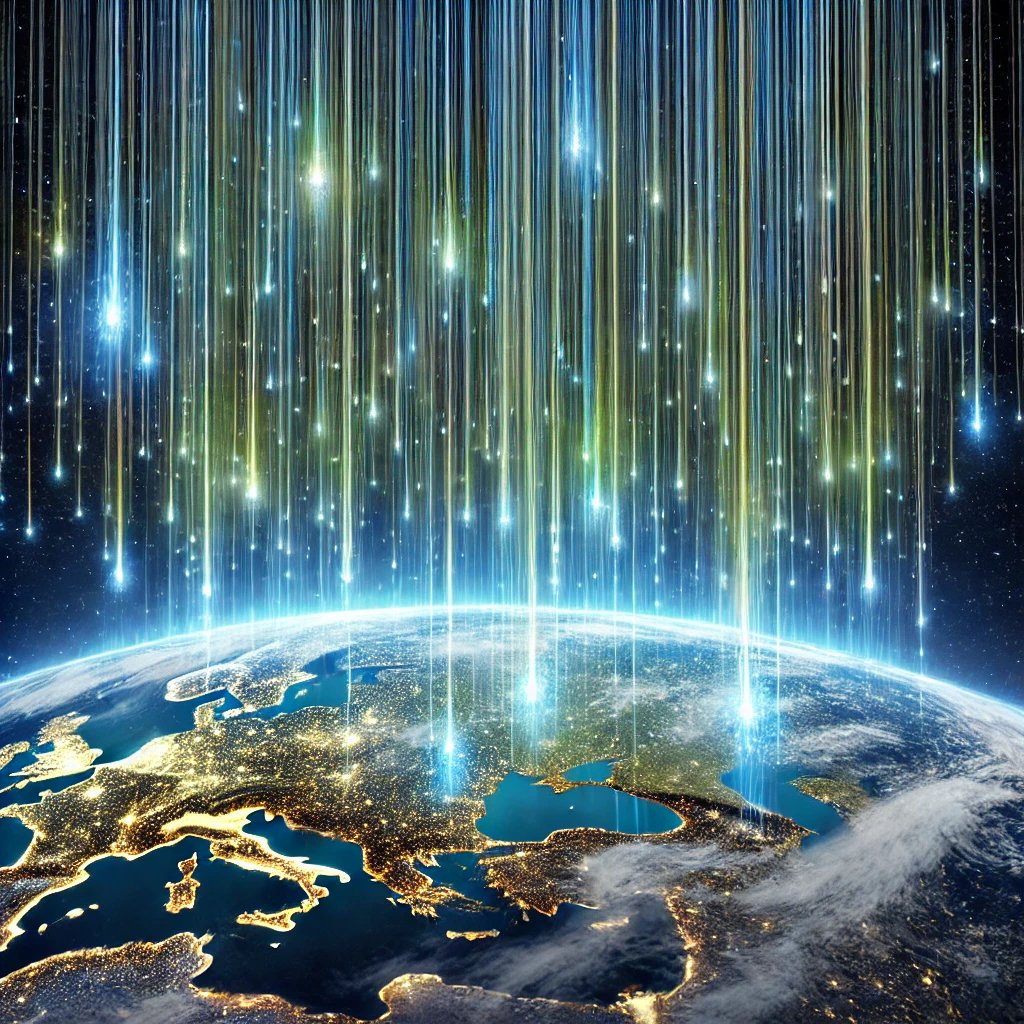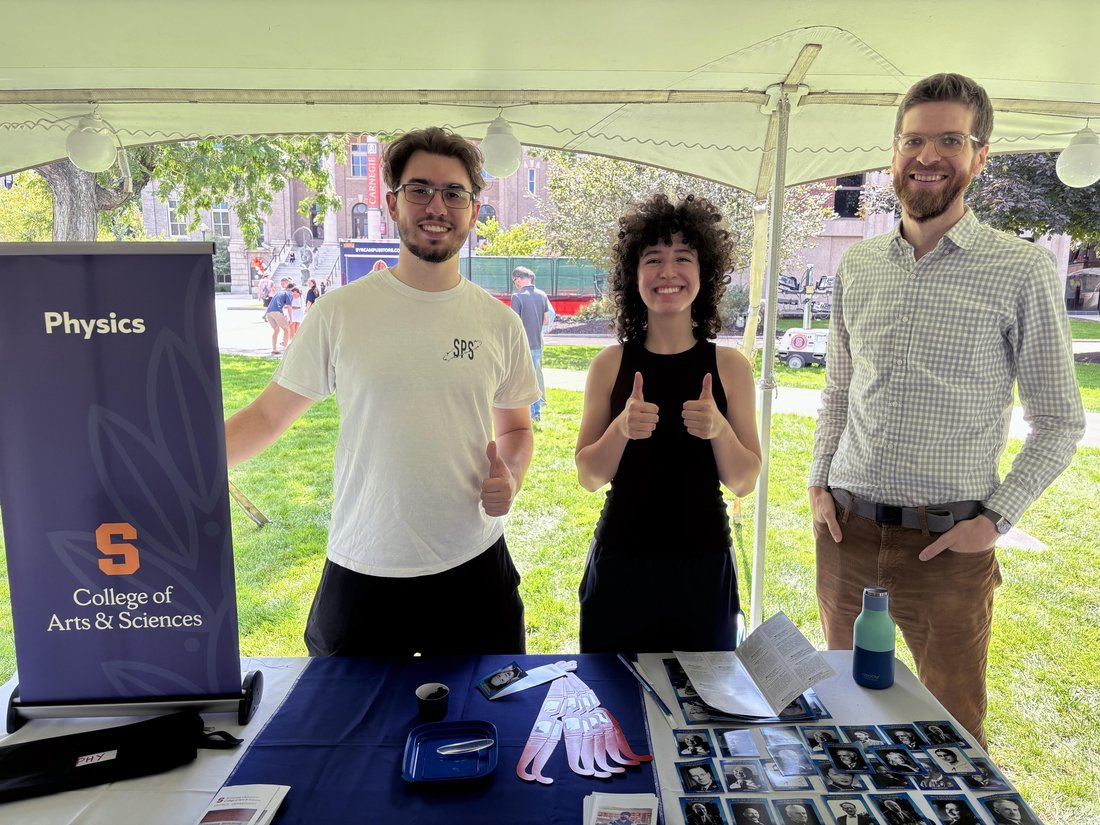Chasing Ghost Particles
Key Takeaways:
- Historic Collaboration: The Experimental Neutrino Physics Group is part of the first joint analysis combining data from the world's two premier neutrino experiments—T2K in Japan and NOvA in the United States—with new results published in Nature.
- Fundamental Questions: The collaboration is tackling one of physics' most profound mysteries: Why does the Universe exist?
- Syracuse's Role: Physics professor Denver Whittington and his students are involved in multiple aspects of the NOvA experiment, from data quality monitoring to searching for exotic particles like dark matter and magnetic monopoles.
One of the biggest quandaries facing scientists today is the baryon asymmetry problem: Why does our Universe contain almost entirely matter, with virtually no antimatter? Physicists theorize that 13.8 billion years ago the Big Bang created equal amounts of matter and antimatter. When these opposites meet, they destroy each other in bursts of pure energy. By that logic, the Universe should have annihilated itself moments after its birth, leaving nothing but light. Yet somehow, we're still here.
Scientists hypothesize that at some point, matter and antimatter behaved differently from one another. That tiny difference—a broken symmetry between particles and their antimatter twins—may have tipped the cosmic scales in favor of matter, allowing galaxies, stars, planets and life to exist.
Enter a potential piece of the puzzle: neutrinos, which are ghostly particles that are so tiny and reluctant to interact with ordinary matter that they can pass through the entire Earth without bumping into a single atom. These elementary particles come in three "flavors"—electron, muon and tau neutrinos—and exhibit a quantum mechanical behavior called oscillation, spontaneously changing from one flavor to another as they travel.
Two Experiments, One Goal
The T2K (Tokai to Kamioka) and NOvA (NuMI Off-axis νe Appearance) experiments represent the cutting edge of neutrino physics. T2K sends an intense beam of muon neutrinos 183 miles across Japan, while NOvA uses Fermilab's NuMI beam to study neutrinos over a 500-mile path through the American Midwest. The NOvA collaboration alone includes more than 250 scientists and engineers from 49 institutions across eight countries.

Here's how the experiments work: Scientists first measure the neutrinos at a near detector located at the beam's origin to establish a baseline of their initial composition and energy. Then, as neutrinos travel these vast distances, they transform from one type to another—a phenomenon called oscillation. Massive detectors at the far end of each beam path catch a tiny fraction of these neutrinos and identify what type they've become, allowing scientists to compare the far detector measurements with the near detector baseline and calculate the precise rates and patterns of these transformations.
Despite their different designs, both experiments share the same ambitious goal: to measure how neutrinos and antineutrinos oscillate, and whether they oscillate differently. Finding that difference—called CP violation—could finally explain why the Universe favored matter over antimatter.
A new study published in the journal Nature outlines the first joint neutrino oscillation analysis of data from the T2K and NOvA experiments, taking advantage of each project's complementary experimental designs to work together on precision data analysis. Physicists from the Experimental Neutrino Physics Group at Syracuse University's College of Arts and Sciences have been deeply involved in multiple aspects of the NOvA experiment, from the day-to-day operations that keep the massive detectors running to the sophisticated analyses that extract physics insights from the data.
Among the neutrino group's leaders is Denver Whittington, associate professor of physics in A&S, who has been a member of the NOvA collaboration for more than a decade.
"I think this study was particularly valuable in that it identified and tackled a number of different challenges associated with comparing and combining measurements made from two very different neutrino experiments with different neutrino beams both looking to measure the same physics," says Whittington.
Before this joint analysis, a puzzle existed: NOvA slightly favored one value for CP violation while T2K pointed toward a slightly different result. Neither strongly ruled out the other, but the discrepancy was there. The solution lay in recognizing that each experiment had different strengths. T2K measurements excel at isolating the impact of CP violation, while NOvA has significant sensitivity to mass ordering—the question of which neutrino is heaviest.
Whittington notes that by probing both experiments' data simultaneously, the joint analysis leveraged these complementary strengths to demonstrate that both datasets were actually compatible.
Syracuse's Contributions
A&S physics graduate student Aklima Lima is among the group members involved in the collaboration. Her research has focused on data quality monitoring—the crucial work of ensuring that every neutrino event recorded meets rigorous standards. She has also worked on extending baseline neutrino event selection to boost the NOvA experiment's physics sensitivity and explore cosmic-ray physics with the far detector in northern Minnesota.

Beyond neutrinos themselves, Whittington serves as co-convener of a working group examining non-neutrino physics with the NOvA detectors. This includes searches for hints of dark matter—the mysterious substance that makes up most of the Universe's mass—and exotic hypothetical particles like magnetic monopoles, theoretical objects that would possess only a north or south magnetic pole, never both.
What's at Stake
The joint T2K-NOvA analysis tackles three fundamental questions that could reshape our understanding of the Universe.
- Can we definitively observe muon neutrinos oscillating into electron neutrinos? While scientists have seen other types of neutrino oscillations, measuring this particular transformation with precision is essential for understanding the complete picture.
- What is the ordering of neutrino masses? Scientists know neutrinos are about a million times lighter than other particles, but they don't know which type is heaviest and which is lightest. This "mass hierarchy" question has profound implications for theoretical models of particle physics.
- Do neutrinos violate the symmetry between matter and antimatter? If antineutrinos oscillate at a different rate than neutrinos, it would be a smoking gun for CP violation—and a crucial clue to why we exist.
Looking Ahead
The DUNE (Deep Underground Neutrino Experiment) facility, currently under construction in South Dakota, and Japan's Hyper-Kamiokande detector will represent the next generation of neutrino experiments, with even greater sensitivity and precision. The collaborative framework being established by T2K and NOvA will serve as a roadmap for these future projects.
As trillions of neutrinos continue their silent journey through our bodies and the Earth itself, Syracuse University's physicists are working alongside scientists around the world to decode their secrets—and in doing so, may finally answer fundamental questions about why our Universe developed the rich structure and complexity we see today.
Published: Oct. 24, 2025
Media Contact: asnews@syr.edu


